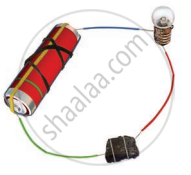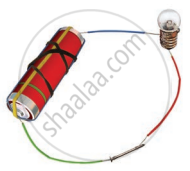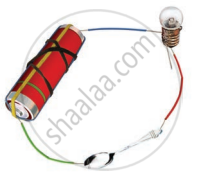Advertisements
Advertisements
Question
Observe the following circuits carefully. In which circuit will the bulb glow? Write Yes or No in the blank space provided along each of the circuit given in the figure.
|
(a) |
Piece of coal |
______ |
|
(b) |
Iron nail |
______ |
|
(c) |
Eraser |
______ |
|
(d) |
Steel spoon |
______ |
Solution
- No, because piece of coal is a poor conductor of electricity.
- Yes, because iron nail is a good conductor of electricity.
- No, because eraser is a poor conductor of electricity.
- Yes, because steel spoon is a good conductor of electricity.
APPEARS IN
RELATED QUESTIONS
The passage of an electric current through a solution causes ______ effects.
If you pass current through copper sulphate solution, copper gets deposited on the plate connected to the ______ terminal of the battery.
Prepare a list of objects around you that are electroplated.
When electric current is passed through a conducting solution, there is a change of colour of the solution. This indicates
One of the most common applications of chemical effect of electric current is ______.
Paheli set up an experiment using liquid A in the beaker as shown in the figure. She observed that the bulb glows. Then, she replaced the liquid A by another liquid B. This time the bulb did not glow. Boojho suggested replacing the bulb by an LED. They observed that the LED glows. Explain.
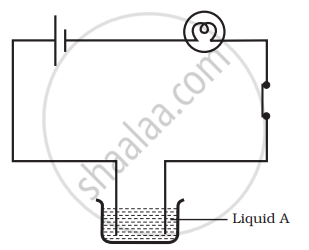
Paheli wants to deposit silver on an iron spoon. She took silver nitrate (AgNO3) solution in a beaker and set up a simple circuit for electroplating. Which terminal of the battery should the spoon be connected to? What material should the other electrode be made of?
Why is tin electroplated on iron to make cans used for storing food?
In the circuit given in the figure,
Boojho observed that copper is deposited on the electrode connected to the negative terminal of the battery.
Paheli tried to repeat the same experiment. But she could find only one copper plate. Therefore, she took a carbon rod as negative electrode. Will copper be still deposited on the carbon rod? Explain your answer.
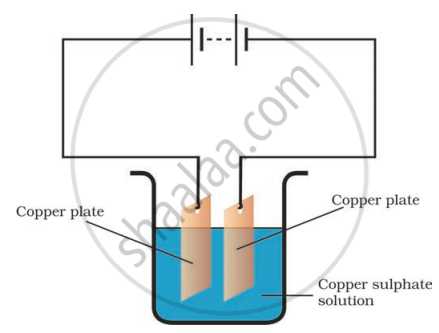
The most common industrial application of chemical effects of electric current is ______.
